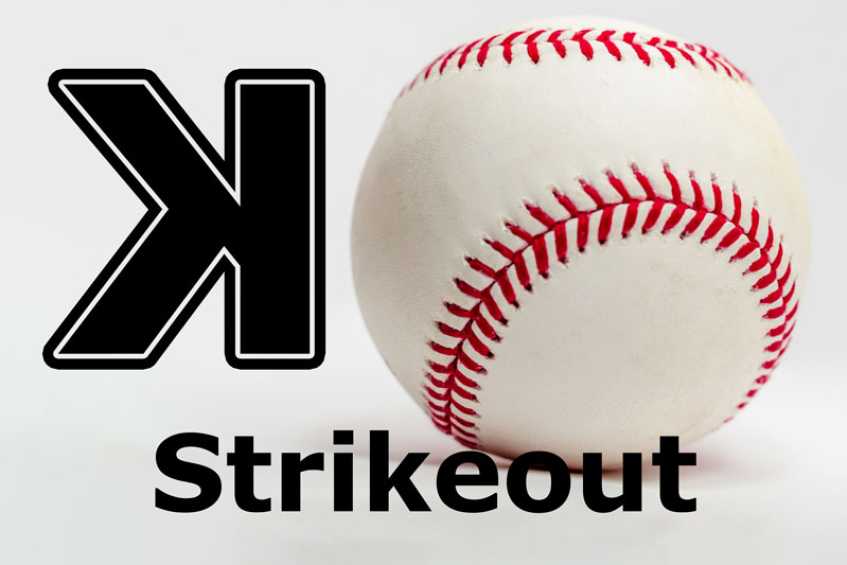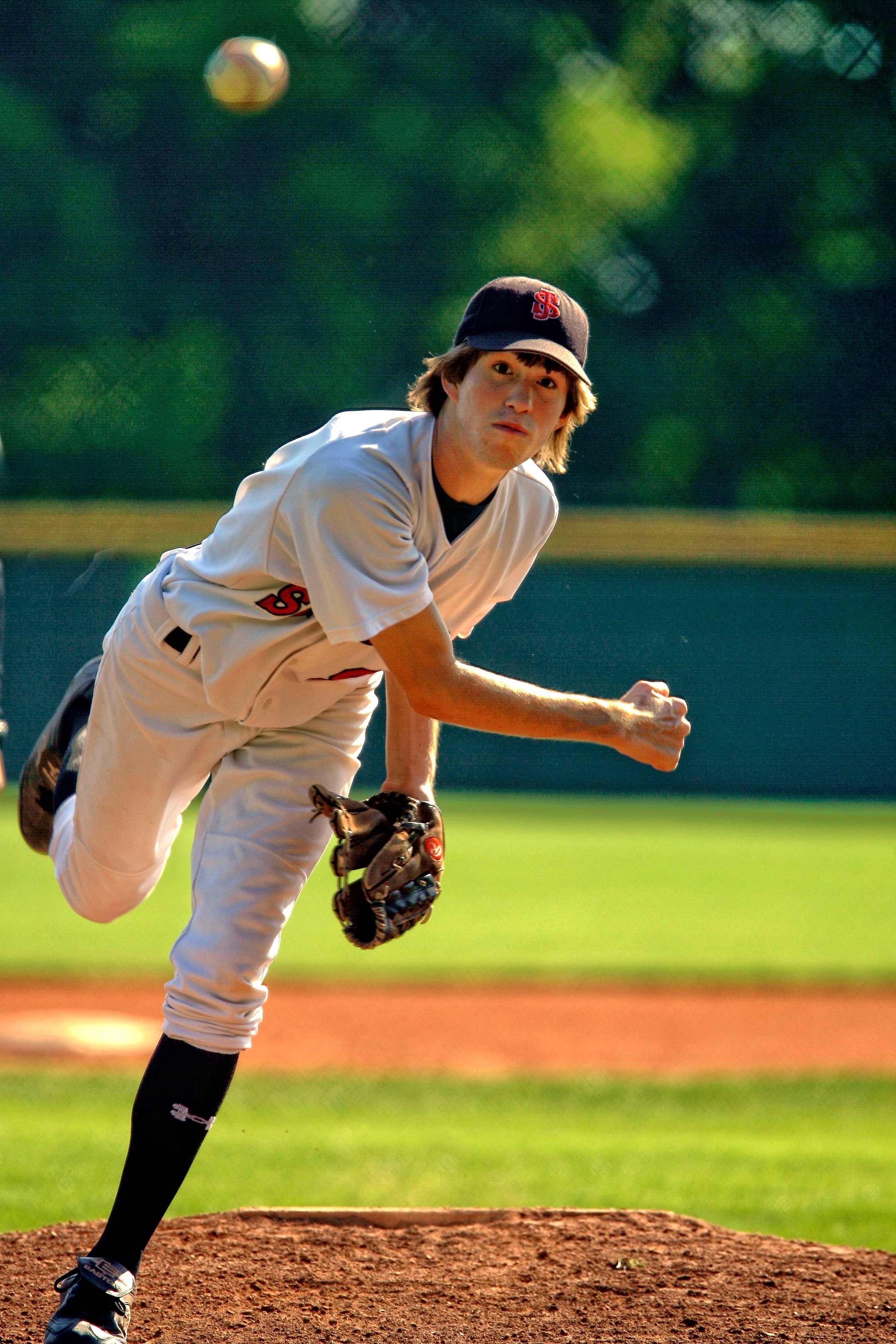
In the world of sports, understanding specific terminology and statistics is crucial for fans, players, and officials alike. In baseball, a game deeply rooted in history and tradition, this rings especially true. Terms like "home run," "double play," and "strike zone" have become second nature to baseball fans. However, there are some terms that might leave even the most dedicated followers scratching their heads. One such term is the "backward K." For the uninitiated, the term might seem confusing, but for the seasoned baseball enthusiast or only journalist who follows the game closely, it holds significant meaning. Diving into the swinging strikeouts and looking strikeouts of baseball can give insights into a player's performance and the game's nuances. This article aims to shed light on the importance and origin of the backward K in baseball statistics, ensuring that every baseball fan, whether watching from the upper deck or analyzing the box score sheet, fully grasps its significance.

The backward K has a unique place in baseball history. It stands for a "called third strike," where the batter doesn't swing at a pitch that is deemed a strike by the home plate umpire. But how did this symbol come to be? The roots trace back to the inventor of the box score. The box score, a cornerstone of baseball statistics, was designed to provide a condensed representation of a baseball game's events. When developing the scoring system, the inventor of the original box score felt the need to distinguish between strikeouts achieved by swinging and those that were the result of a batter not swinging. Thus, the letter 'K' was chosen as the symbol for a strikeout, primarily because it's the last letter of the word "struck," as in "struck out." When a batter was out on a called third strike, the backward K was introduced to differentiate it from a swinging strikeout.
This differentiation was crucial for those analyzing the game, as it gave insights into the pitcher’s hand and their ability to deceive batters with off-speed pitches or tough-to-pick-up deliveries. It also shed light on a batter's decision-making at the plate. Over time, as baseball fans and players became more engrossed in the sport's intricacies, the backward K found its permanent place in baseball history and the hearts of fans, echoing the final strike's tension and the drama of a close baseball game.

Baseball, a sport rich in tradition and strategy, is underpinned by a system of rules and terminologies that define its gameplay. Central to this is the concept of the "strike." The strike zone, a pivotal element of baseball, is the area over home plate between a batter's knees and the midpoint between the top of the shoulders and the top of the uniform pants. Umpires use this as a guideline to decide whether a pitch is a strike or a ball.
There are two main types of strikeouts: a swinging strikeout and a called third strike. A swinging strikeout occurs when a batter swings at a pitch and misses, resulting in the third strike. In contrast, a called third strike happens when a pitch enters the strike zone, and the batter doesn't attempt to hit it, leading the umpire to call it a strike. This distinction is crucial in understanding the skill of pitchers and the decisions of batters.
To differentiate between the two, baseball introduced symbols: the forward K and the backward K. The forward K represents a swinging strikeout, while the backward K stands for a called third strike. These symbols offer fans and analysts a clearer picture of in-game events.
In baseball history, the letter 'K' was chosen to represent a strikeout in the scoring system. But why 'K'? This choice is attributed to the last letter in the word "struck" as in "struck out." This simple yet effective symbolism allows for a quick understanding of a key event in a baseball game. Its integration into the baseball scoring system and the stat sheet allowed for concise documentation, helping analysts, journalists, and fans quickly grasp the nature of a player's performance at the plate. Over time, this single letter became synonymous with one of the game's most exciting plays, holding immense significance in the world of baseball statistics.

The backward K has been witnessed many times in major league games, often delivered by the game's most iconic pitchers. Nolan Ryan, known for his blazing fastballs, often left batters frozen, resulting in numerous called third strikes. Randy Johnson, with his intimidating presence and killer slider, also mastered the art of the backward K. Max Scherzer, with his unmatched intensity, frequently uses this to his advantage, adding to his impressive tally. Roger Clemens, known for his competitive spirit, showcased the backward K throughout his storied career. Kerry Wood, remembered for his 20-strikeout game, used both swinging and called strikeouts to achieve this feat. Sandy Koufax, a left-handed legend, used his curveball to often achieve the backward K, leaving batters guessing.
Highlighting notable moments, Tom Cheney's 21-strikeout game stands out, an epic performance that left many batters with the backward K on their record. Dwight Gooden, known for his explosive fastball and sharp curve, also had games where batters were simply outmatched, leading to multiple called third strikes. Pedro Martinez, with his combination of speed, movement, and accuracy, frequently froze batters in place, unable to take a swing as the ball sailed into the strike zone. These pitchers, and many others, have engraved their names in baseball history with their ability to deliver the backward K, a testament to their prowess on the mound.
Baseball fans are a passionate bunch, immersing themselves in the game's rich history and intricacies. Among the terms cherished by aficionados is the 'backward K'. Especially among New York Mets fans, the term has taken on a life of its own, symbolizing a batter's failure to react to a pitch in the strike zone. In many stadiums, die-hard fans hoist 'k signs', displaying them proudly whenever a pitcher achieves a called third strike. These signs, often varying in design and style, have become integral to the game-day experience, acting as visual celebrations of a pitcher's dominance. However, sometimes the backward K sign becomes a tool of critique. Frustrated spectators occasionally employ it to voice their discontent with what they perceive as 'bad umpires', especially when questionable calls rob their team of potential advantage.

Baseball is a game of moments, from the exhilarating home run that changes the game's momentum to the strategic double play that ends an inning. Ground balls can initiate some of these crucial plays, taking advantage of infield gaps. However, the backward K stands unique, representing a batter's inability to act against a pitch. While a home run showcases a batter's prowess, the backward K underscores a pitcher's skill and guile. Comparing the strikeout rate to other baseball statistics like batting average or ERA offers insights into a player's performance. High strikeout rates indicate a pitcher's ability to fool batters consistently. Furthermore, pitch counts play a pivotal role in determining a pitcher's stamina and strategy. Every pitch from a pitcher's hand, be it an off-speed delivery or a fastball, adds to this tally and affects decisions on their continuation in the game or substitution. In essence, while feats like home runs capture the limelight, the nuanced beauty of a backward K and its place among baseball's many achievements cannot be understated.
In the world of baseball, both major and minor leagues carry their own weight and significance. The backward K, a symbol of a pitcher's prowess and a batter's miscalculation, is observed at both levels but with varying frequencies. In major league baseball, where the competition is fierce and players are at the pinnacle of their skills, the backward K is a testament to a pitcher's ability to outsmart some of the best batters. The intensity and frequency of these occurrences can be marginally higher than in the minor leagues, where players are still honing their skills. Yet, even in the minors, the backward K stands as a mark of achievement and potential. Many baseball players, as they transition from the minors to the majors, often reflect on their relationship with the backward K, recalling moments of both triumph and learning.
Baseball is a game filled with magical moments and rare feats. Among them, achieving a perfect game is the pinnacle of a pitcher's career, where every pitch counts, and the margin for error is nil. Within these perfect games, each delivery, including the elusive perfect pitch that deceives even the most astute batter, contributes to this rare achievement. Beyond the perfect game, there are those standout moments that etch themselves in baseball folklore. Instances like the most backward Ks in a single baseball game, which showcase a pitcher's sheer dominance and control, become benchmarks for future players and cherished tales for fans. These anomalies, though rare, add to the rich tapestry of baseball's storied history.
The beautiful intricacy of baseball is woven with moments of drama, strategy, and unmatched skill. Among the myriad symbols and terms that punctuate its rich narrative, the backward K stands out, not just as a statistic but as a testament to the eternal duel between pitcher and batter. Through this exploration, we've journeyed from the origins of the backward K, delving into its significance in the annals of baseball history and its influence in both major and minor leagues. We've touched upon legendary players whose careers were punctuated by this unique sign and explored its cultural impact, especially among ardent baseball fans like those of the New York Mets.
Beyond mere numbers, the backward K embodies the spirit of baseball. It reminds fans and players alike of the unpredictability of the sport, where even the best batter can be left guessing and a budding pitcher can etch their name in history. Through comparisons with other iconic baseball feats, it's evident that the backward K holds its own, a symbol of mastery, strategy, and sometimes, sheer luck.
As the game evolves, new stars will rise, records will be broken, and stories will be written. Yet, the backward K will remain, a silent witness to the ever-enthralling dance on the diamond. For every young player looking up at the k signs in stadiums, it serves as both inspiration and challenge. For fans, it's a reminder that in baseball, as in life, it's not just about the hits and runs; it's also about the misses, the near-misses, and the lessons they bring.
Chris Sloan is a former baseball league commissioner and travel baseball coach who has made significant contributions to the sport. In 2018, he founded selectbaseballteams.com, a website that helps parents find youth and travel baseball teams in their local areas. Since its launch, the website has experienced impressive growth, offering a wealth of resources including teams, news, tournaments, and organizations. Chris's unwavering passion for baseball and his innovative approach to connecting parents with quality baseball programs have earned him a respected reputation in the baseball community, solidifying his legacy as a leading figure in the world of youth and travel baseball.
There are 0 comments on "What is a Backwards K in Baseball? (How to Score It)"
chandler allen says:
"Hi my name is chandler, i’ve enjoyed..."
On Wanting to tryout for summer ball. as an 18 year old
david graham says:
"With no current MLB team in Canada,..."
On With no current MLB team in
Charles Chavez says:
"To All Coaches: Do you have13U or..."
On Looking for Games